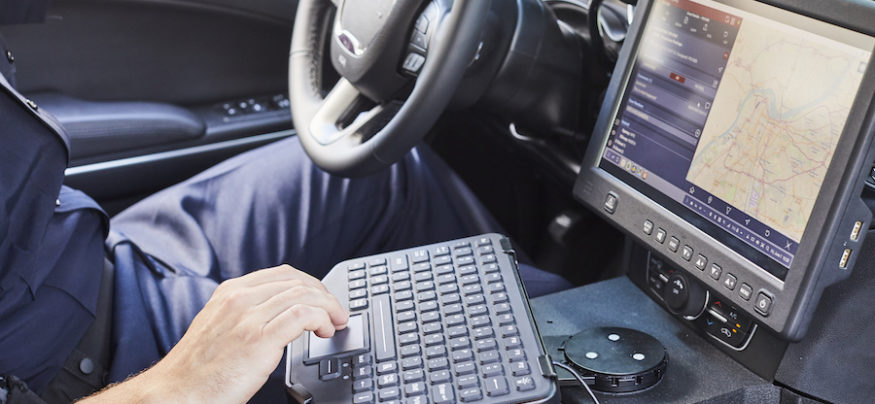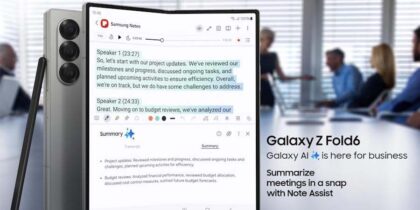With the implementation of public safety LTE networks in the United States and abroad starting to grow, law enforcement and other public safety agencies can now truly move to a mobile-first approach.
At the Public Safety Network, we see this evolution occurring in public safety departments across the country. Police officers have relied on technology to be effective for many years, but now can leverage the latest smartphones and rely on having uninterrupted access to broadband data and voice communications even during large-scale emergencies.
The shift to mobile just makes sense. First responders constitute a “mobile workforce” more so than almost any other profession. More than 20 years ago when I was still a police officer, agencies began making the transition to digital with the rollout of desktops in the station and in-vehicle laptops. This shift to mobile will be just as significant — providing officers the ability to access critical data and communications from anywhere, and increasing the speed and efficiency of reporting.
A Mobile-First Case Study
To see how departments should evolve and adapt, the Public Safety Network team recently conducted a cost/benefit analysis modeled on a progressive law enforcement agency with about 1,800 police officers transitioning to a mobile-first approach with Samsung’s DeX solution. Our analysis looked at how this technological transition would be implemented over three years, creating a model for the expected costs and potential savings.
The analysis, commissioned by Samsung and presented in full in our “Bringing Mobile First to Public Safety” white paper, shows that the transition to mobile-first leveraging public safety broadband will not only allow agencies to improve their capabilities, but will also save them money today and in the future.
Get the Samsung DeX Study for Public Safety
Download the Public Safety Network's in-depth cost comparison on Samsung's DeX in-vehicle solution. Download Now
The Samsung DeX solution, in particular, offers the opportunity for agencies to streamline and consolidate their mobile computing investments. By outfitting officers with a Samsung smartphone and installing a DeX setup with a monitor and keyboard within vehicles and in the station, agencies can replace the hardened in-vehicle laptops and desktop computers within the station, as well as scanners, audio recorders and cameras. Just as importantly, by powering computing from a single device, they can deliver a more unified connection to CAD and other key public safety applications.
Mobile-First Cost Savings
To inform our cost comparison, we looked closely at the technology footprint within public safety agencies today. In our model agency, 70 percent of officers still had a desktop computer assigned to them. About 50 percent were assigned a rugged laptop and 35 percent were issued a rugged smartphone. Every agency will differ based on its own structure and technology plan, but the above percentages are typical of a large law enforcement agency today.
In transitioning to mobile-first, we assumed that all officers would be issued with a Samsung smartphone, all vehicles would be outfitted with an in-vehicle DeX set up featuring a monitor and keyboard, and existing in-station monitors and keyboards would be used with Samsung smartphones and DeX.
Our analysis found extremely positive financial and operational impacts across the board with a move to a mobile-first approach. By reducing the number of computing endpoints to be acquired and maintained, the model agency would realize more than $1.1 million (15 percent) in year one savings and more than $441,000 (32 percent) in annual savings thereafter.
Mobile-First Means Greater Efficiency
What is most exciting to me, however, is the increased capabilities that mobile can bring: greater access to critical communications and data, ease of adoption since smartphone technology is already widely used in officers’ personal lives, and greater efficiency so officers have more time to proactively reduce crime and respond to emergency calls.
It is estimated that more than 30 percent of an officer’s time is spent writing and filing reports and law enforcement paperwork. With a mobile-first solution, report creation is streamlined and these operational efficiencies can make a significant difference in how much time an officer spends on reports and at the station, rather than in their community.
It is critical for each agency to look at its current information technology spend to truly understand the full costs of existing technology implementation and where improvements can be made going forward. Public safety agencies should review existing technology purchases, licensing fees, maintenance, upgrade and support costs and see how going mobile-first could impact this.
Based on our research, we believe agencies will find that implementing a mobile-first solution like Samsung DeX offers the potential to significantly reduce costs, while improving the effectiveness and operational capability of officers in the field.
For a full cost/benefit analysis of the Samsung DeX in-vehicle solution, download the Public Safety Network’s study.









